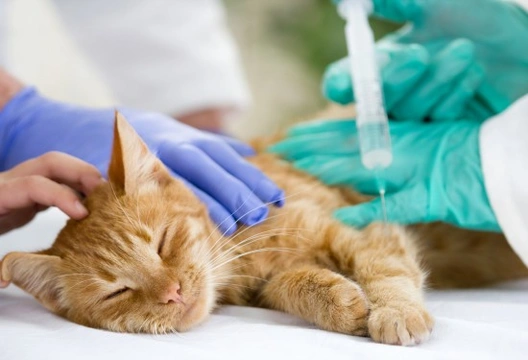Pets
Pets for studWanted petsBreedersAccessories & services
Knowledge hub
Support
Support & safety portal
What Happens When You Leave Your Cat For an Operation?
All cat owners find it very hard to leave their beloved feline friends at the surgery because they need an operation even though they know that for whatever reason their pets need to undergo the surgery. People usually start feeling a little guilty about the whole situation the night before when they have taken away any food or drinking water they cats would normally have.
The feelings of guilt don't get any better the next morning when you need to put your cat in their carrier knowing they are probably quite thirsty and a little hungry. It's an anxious time for pussy cats too because suddenly their routine changes, something no cat really likes or feels comfortable with.
The Stressful Journey to the Vet
Once in the car, there's the stressful journey ahead which is never a very pleasant experience, especially if you own a cat that meows pitifully the whole way. At the vets, there's the form to sign before you hand over your beloved cat to a complete stranger hoping they will take great care of them before, during and after their surgery. If you have never had to take your cat to the vet before, this is a very worrying and nerve racking experience.
What Happens Next?
Once you have said "goodbye" to your cat, they are taken away so they can be weighed. This is essential because the vet needs to know just how much anaesthetic they need to give your feline friend. A lot of vets will also carry out a pre-anaesthetic blood test which they do to make sure a cat is in good health. The test makes sure liver and kidney function are as they should be and to ensure there are not problems with either of these vital organs. Once a thorough examination has been carried out, your little furry friend is put in their own kennel which boasts a nice comfortable vet bed.
Around half an hour before your cat is given any anaesthetic, they will have a "pre-med" which is a combination of two drugs namely a sedative and a painkiller. These help settle cats down and cats don't need as much anaesthetic during an operation either. As soon as the pre-med kicks in, cats are taken to the prep room where they are given a very fast acting anaesthetic which in turn means cats seldom have time to get stressed out.
Once your cat is asleep, the vet would place a breathing tube in their windpipe before attaching it to an anaesthetic machine. This ensures both oxygen and the needed anaesthetic is administered in the correct doses throughout the procedure. However, a veterinary nurse also keeps a close eye on things the whole time taking note of both respiratory and heart rate as well as assessing just how deep under the anaesthetic your cat actually is. Should this be too deep, the nurse would reduce the amount of anaesthetic your pet is being given and if they think it is too shallow, the amount would be increased to ensure your pet stays under.
Any type of operation is taken very seriously and whatever the procedure, whether it's major one or for an x-ray to be taken, the amount of anaesthetic given to your cat is closely monitored right up until the moment your pet is awake again and their breathing tube removed.
The All-important Recovery Time
It takes quite a bit of time for a cat to fully come around after they have been given an anaesthetic which means vets usually like to keep their patients in for a good few hours following a procedure. This is to ensure your pet fully comes around before they are allowed to go home. Cats stay in their kennels and are very closely monitored by a veterinary nurse during this recovery period to make sure they are okay and aware of things going on around them.
Conclusion
Taking a cat to the vet because they need to undergo an operation is a very worrying time for their owners no matter how well they know the people working at the surgery. However, all procedures involving any sort of anaesthetic are carefully monitored by veterinary staff to ensure that a cat never receives either too much or too little of the drug. Veterinary medicine like human medicine, has come on in leaps and bounds over the last few decades which means vets have a lot more choice when it comes to the type of drugs have at their disposal. Technology too now plays an important role in veterinary procedures which makes it a lot safer for cats of all ages to be operated on when needed.



